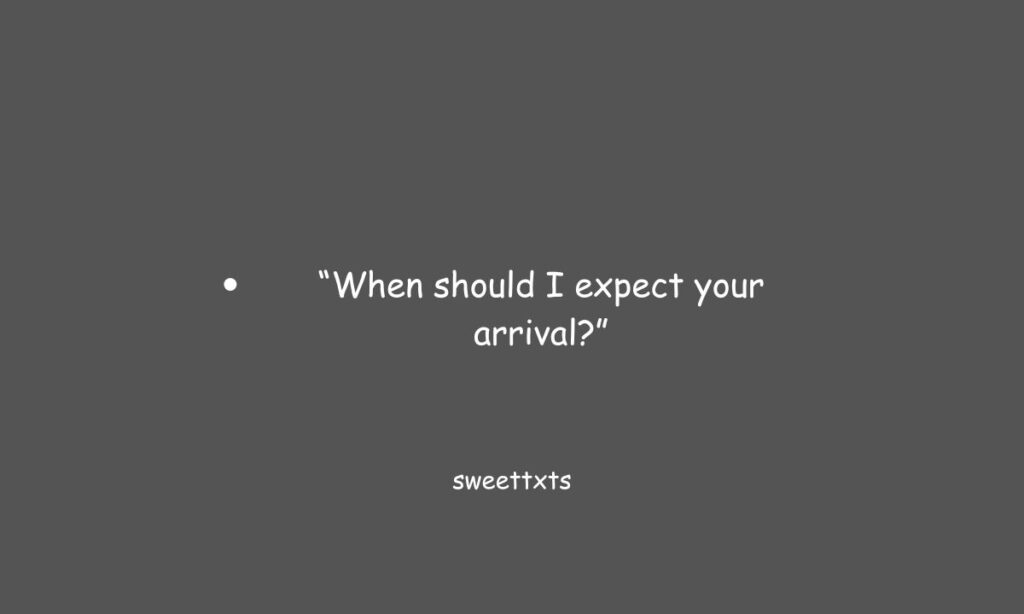In today’s fast-paced digital conversations, acronyms like “ETA” have become integral to how we communicate. Whether in business emails or quick text messages, “ETA” plays a vital role in expressing time expectations clearly.
Understanding the nuances of “ETA” meaning helps users apply it more effectively and appropriately in various contexts. It not only indicates professionalism but also enhances communication clarity, especially in time-sensitive discussions.
Beyond its literal usage, exploring polite, professional, and casual alternatives to “ETA” offers depth to language skills. This article delves into its meaning, usage in texts, the idea of hiatus in this context, and alternative expressions for diverse scenarios.
What Does ETA Mean?
ETA stands for Estimated Time of Arrival. It is commonly used to inform someone when a person, object, or service is expected to reach a destination. For example:
- “What’s your ETA?”
- “The package’s ETA is 4:00 PM.”
ETA is widely used in logistics, travel, service industries, and informal messages. It provides clarity in planning and helps set time-based expectations.
Hiatus Meaning of ETA

When used in casual or digital communication, ETA can take on a subtle hiatus-like meaning. For instance, someone might ask, “Any ETA on the next episode?” or “ETA for the update?” — in both cases, the phrase implies a temporary pause or break with anticipation for resumption.
Here, ETA is less about travel and more about timing the return after a pause or delay. It shows that something is awaited—just as a hiatus implies a break with the expectation of coming back.
ETA Meaning in Text
In texts, ETA is often used in casual and semi-formal tones. Examples include:
- “Hey, what’s your ETA?”
- “ETA on the new release?”
- “Need an ETA for the report.”
It signals brevity and efficiency, making it ideal for platforms with character limits or where time is of the essence.
However, while practical, it might come off as abrupt in formal settings unless tailored properly.
15 Polite, Professional, and Casual Alternatives to ETA
To enhance clarity and tone, here are 15 well-phrased alternatives to “ETA,” categorized for polite, professional, and casual use.
Polite Alternatives
- “When should I expect your arrival?”
– Softens the inquiry while maintaining clarity. - “Could you let me know when you might arrive?”
– Sounds warm and respectful. - “Do you have an idea of when you’ll get here?”
– Makes the question feel less demanding. - “May I know the expected time of your arrival?”
– Formal and courteous phrasing. - “Would you mind sharing when you expect to arrive?”
– Great for delicate or personal conversations.
Professional Alternatives

- “What’s the projected arrival time?”
– Suitable for business or project timelines. - “Please provide the estimated time of delivery.”
– Ideal for shipments, client services, or task management. - “Can you share the timeline for completion?”
– Helpful in formal requests regarding work or deliveries. - “We’d appreciate your expected delivery window.”
– Adds clarity in business exchanges with a respectful tone. - “Let us know when to anticipate your arrival.”
– Balances professionalism with expectation.
Casual Alternatives
- “When are you getting here?”
– Straightforward and friendly. - “Any idea when you’ll show up?”
– Informal and laid-back. - “When should I look out for you?”
– Playful yet clear. - “Got a time in mind for arriving?”
– Easygoing and natural. - “When will you be around?”
– General but effective in casual chats.
How to Choose the Right Alternative
Choosing an alternative to “ETA” depends on the tone and relationship between the speakers. Here’s how to decide:
1. Consider the Audience
Use professional phrasing in workplace or client communication. Polite alternatives work best for unfamiliar or formal conversations. Casual phrases suit friends and relaxed contexts.
2. Match the Medium
For emails, use complete and professional phrasing. In texts or messaging apps, brief and friendly options are more appropriate.
3. Adjust for Urgency
If the timing is critical, using direct but respectful phrases such as “Please confirm your expected time” helps manage time expectations effectively.
Tone Nuances and Implications
- Polite tone: Shows respect, especially useful in delicate interactions.
- Professional tone: Signals credibility and structure; essential in formal environments.
- Casual tone: Encourages ease, perfect for low-stakes exchanges.
Being intentional with tone reflects emotional intelligence and builds stronger communication habits.
ETA vs. Hiatus: Understanding the Difference
While ETA focuses on when something is expected to arrive, hiatus emphasizes a pause or break in activity. However, in context, ETA can imply the anticipated return following a hiatus, especially in entertainment or project updates.
Example:
- “We’re on a short hiatus, ETA for the next episode is next month.”
This shows how understanding both terms enhances clarity in digital conversations.
When NOT to Use ETA

There are cases where “ETA” may be too abrupt or unclear:
- In very formal documents or legal communication.
- When speaking to someone unfamiliar with acronyms.
- In emotionally sensitive contexts, where softer language is more suitable.
In such scenarios, fully spelled alternatives (like “expected time of arrival”) should be used.
Benefits of Using Alternatives to ETA
- Improves Clarity – Avoids misinterpretation, especially in cross-cultural settings.
- Enhances Tone – Reflects emotional awareness and respect.
- Builds Trust – Especially in professional settings where tone matters.
- Demonstrates Language Mastery – A broader vocabulary shows sophistication and adaptability.
ETA Across Cultures and Languages
In multicultural environments, not everyone may understand what “ETA” stands for. Using full phrases like “expected arrival time” or simply asking “When will it arrive?” ensures inclusivity.
Even in translated texts, acronyms often don’t carry over well. Using universal alternatives promotes better understanding.
ETA in Digital Communication
ETA is a go-to shorthand in digital workspaces. Apps like Slack, Teams, and project management tools often use “ETA” to communicate timelines. However, clarity should always be prioritized.
Example:
- Instead of: “ETA for update?”
- Say: “When do you expect the update to be ready?”
This shows more consideration while still asking for the same information.
Professional Etiquette Around Timing Language
Being precise with time estimates and polite in requests demonstrates professionalism. Whether you’re waiting on a report, a delivery, or a person, tone and clarity make a difference.
Using alternatives avoids sounding pushy or rushed, especially in collaborative environments.
Conclusion
Understanding the meaning of ETA and its broader implications, including its connection to the concept of hiatus, helps in shaping better communication. ETA is more than an acronym—it’s a useful linguistic tool when applied with care and thoughtfulness.
Whether you’re writing an email to a colleague or texting a friend about meeting times, choosing the right version of “ETA” or an appropriate alternative ensures your message is respectful, clear, and well-received.

Daily blessings and uplifting messages by Drupmo for every morning, evening, and day of the week—bringing peace, hope, and inspiration to your soul.